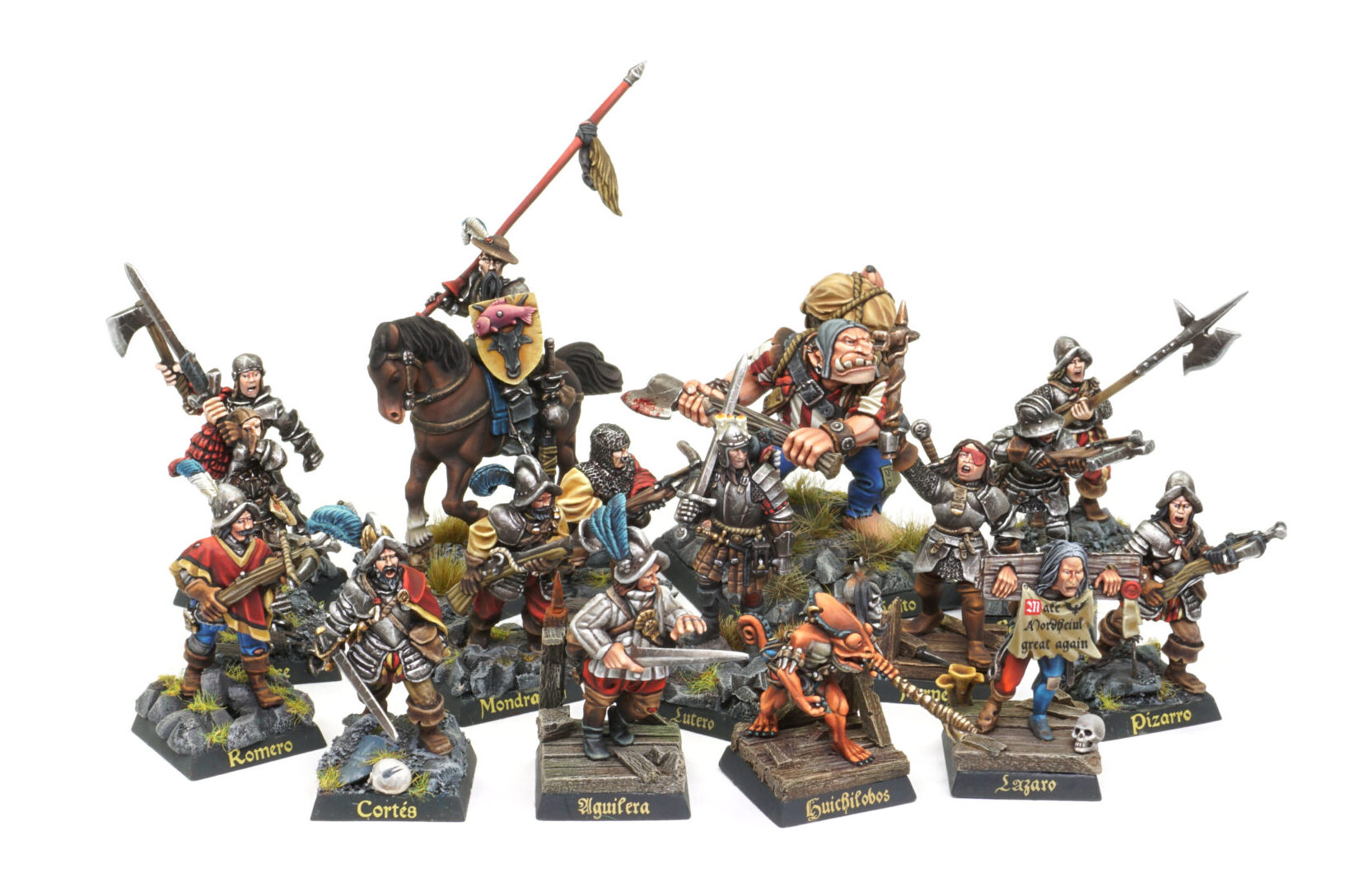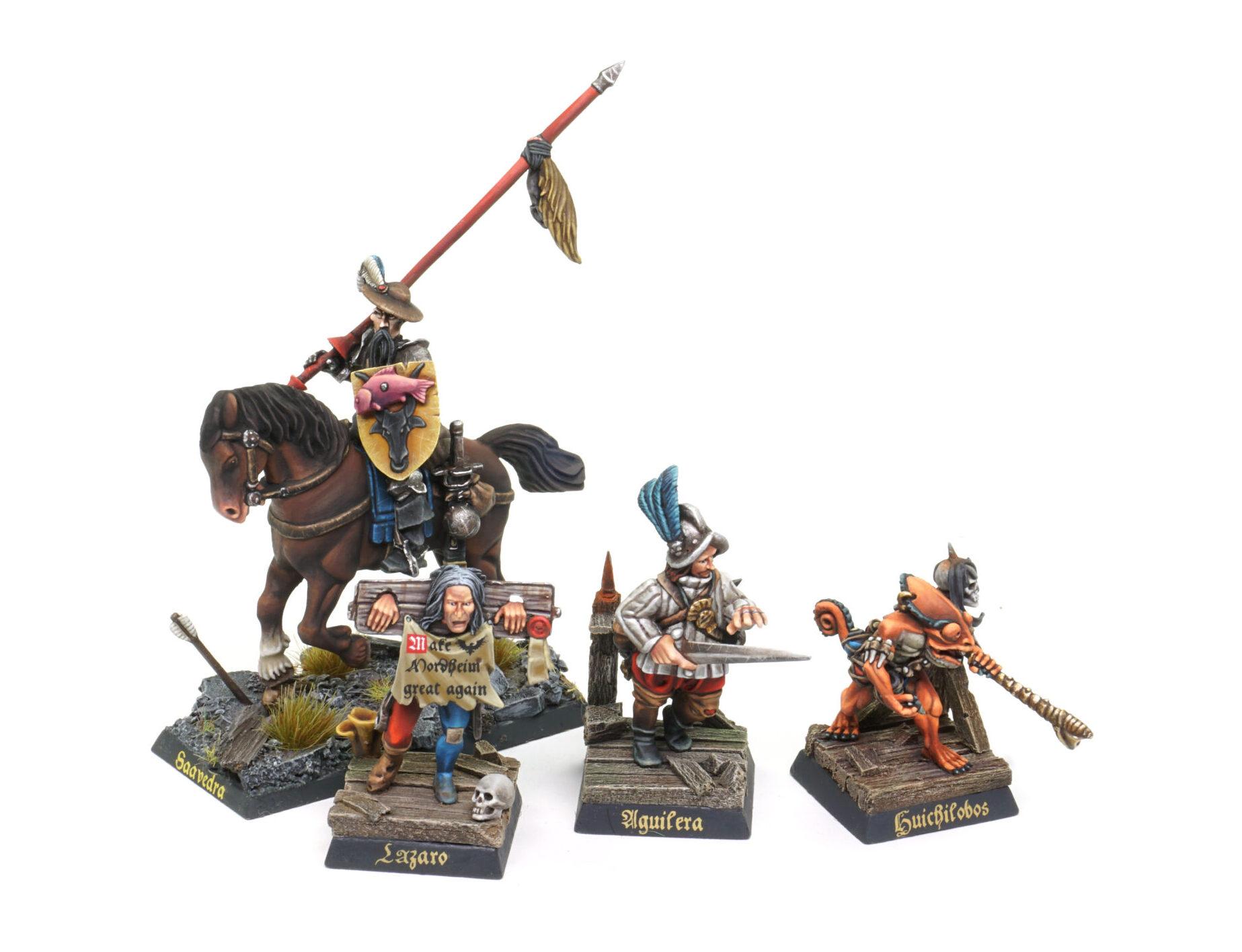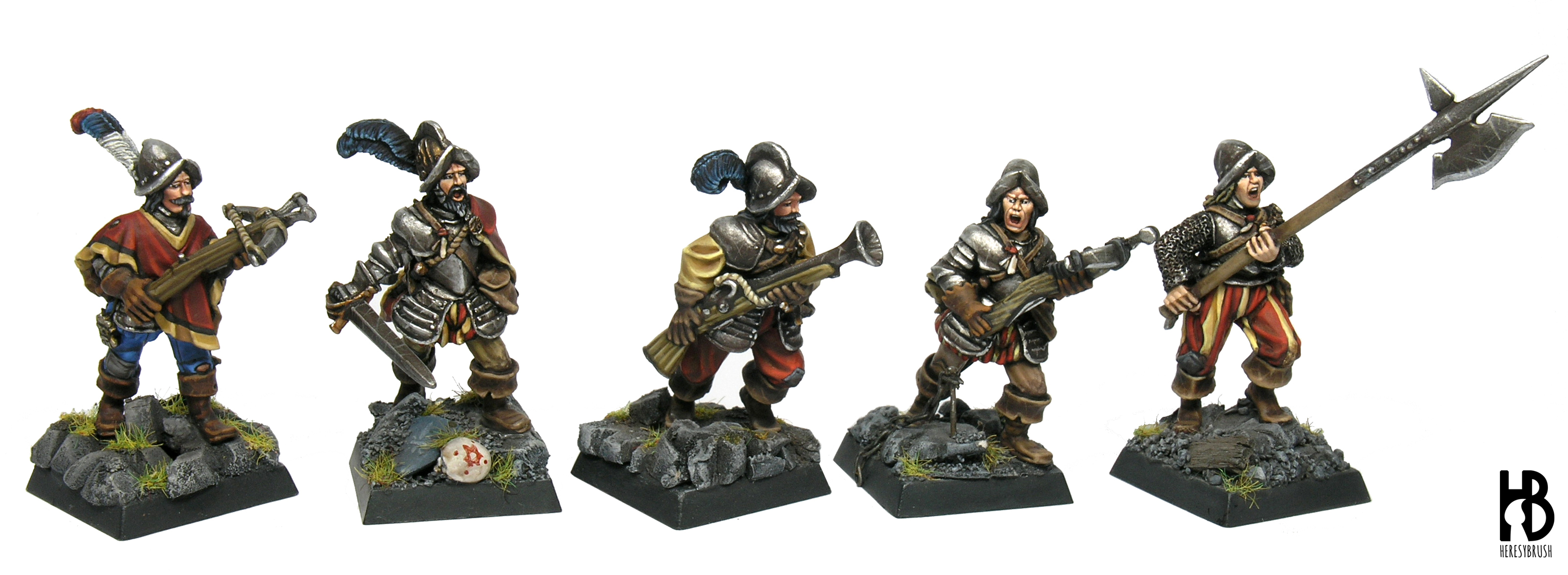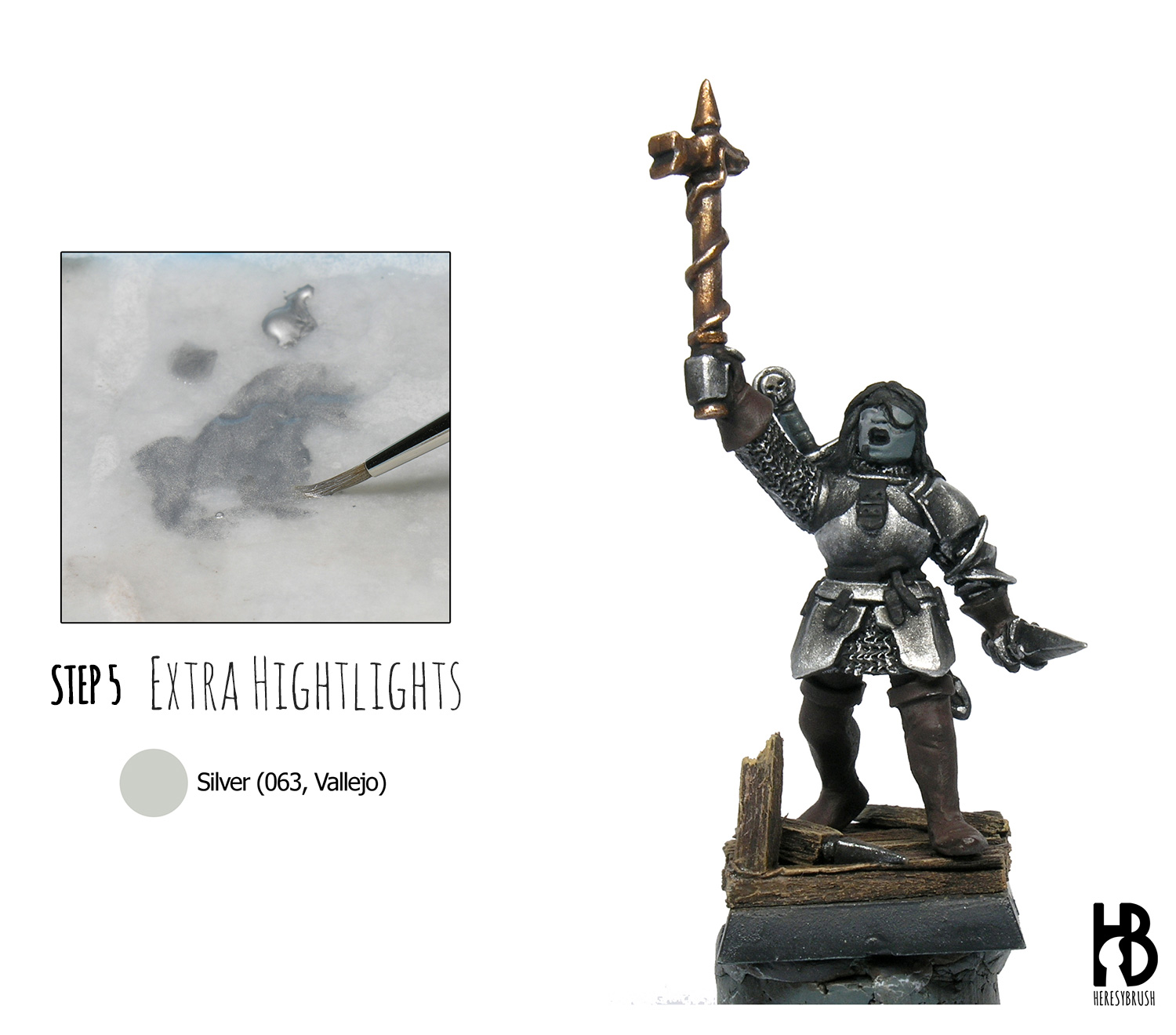 Following another suggestion, I have prepared a small tutorial on painting metals, with a focus on steel. If there is a specific tutorial you’d like to see that I haven’t covered yet on the blog, feel free to drop me a message! You can also check out the second part of this post, which covers painting leather, here. Additionally, I’ve recently written an article on painting TMM gold, which you can find here.
Following another suggestion, I have prepared a small tutorial on painting metals, with a focus on steel. If there is a specific tutorial you’d like to see that I haven’t covered yet on the blog, feel free to drop me a message! You can also check out the second part of this post, which covers painting leather, here. Additionally, I’ve recently written an article on painting TMM gold, which you can find here.
Painting metals can be challenging for some. Many metallic acrylic paints have low coverage when thinned even slightly with water. Conversely, if not thinned, these paints can become too thick and create undesired textures. Moreover, the metal flakes used to simulate a metallic surface can lead to undesirable effects, especially if the flakes are too large. It is crucial to handle brushes and water carefully when working with metallic paints, as the water used for cleaning brushes or thinning paints can become contaminated with metal flakes, potentially ruining other paints if reused. Another tricky aspect is applying shades and highlights with metallic colors, which we will address in this tutorial.
Last year, I participated in an exciting project with my friends from Modelbrush, where we aimed to paint an entire Age of Sigmar army within a year. I chose to paint a “horde” army (Legions of Nagash), which required me to find faster painting techniques for my miniatures. This project was a great experience as it pushed me to experiment with various methods I wouldn’t have tried otherwise. For instance, I used intense washes (such as Citadel’s Contrast paints) for the first time and began incorporating the airbrush more heavily. I also developed a quick technique for painting metallic parts using Citadel’s washes or Shades.
If you have the chance, I highly recommend participating in a painting league or project like this—they can be incredibly instructive! Later in the fall, I decided to revisit my old Mordheim miniatures, which are fully armored, and further refined this technique.
While my approach is far from perfect (it never will be!), the following lines will outline my method for painting “true metallic metals” (as opposed to “non-metallic metals,” where we use non-metallic paints to simulate metal). Please note that this is just one of many possible recipes. I encourage you to explore various methods through Google and YouTube until you find what works best for you. Practice is the best teacher!
True metallic metal
As usual, start with applying the primer coat. I used One Shot Grey Primer from AMMO, which I prefer because it provides excellent coverage and works well with almost any paint.
Paint all the metallic parts of the miniature with steel. I used Oily Steel (865, Vallejo), but any medium steel or iron color will work. For added contrast, I painted the war hammer with Brassy Brass (058, Vallejo Game Color). Thin the acrylic paints with a little water and apply up to three thin layers for a smooth, even color. This method helps avoid unwanted textures. Remember to use a separate glass of water for cleaning brushes used with metallic paints to prevent contamination.
Apply an acrylic wash to add depth. I used Citadel Shades: Nuln Oil (black) for the steel and Agrax Earthshade (dark brown) for the brass. Once the wash dries, you can apply a second layer if needed for increased contrast. For example, I did this on the war hammer. The effect is already quite striking at this stage!
To enhance contrast further, do the following:
- Black Profiling: Use black paint and a thin brush to outline the edges of all metallic parts and details. This step is crucial for defining the metal elements more clearly.
- Glazes: Apply glazes to intensify shadows. A glaze is a very thin, semi-transparent layer of paint (thinned 1:5 with water) that blends smoothly from one color to another. Apply a black glaze starting from the lighter area and moving toward the darker area to create more pronounced shadows. For instance, darken the lower areas of the breastplate and the upper parts of the tassets (the metal skirt) to add depth.
Next, focus on highlighting with a light color. I used Silver (063, Vallejo) from the Model Air range, which has a fine pigment. Apply silver highlights along the edges of each armor piece. Use the brush bristles horizontally along the edges to create thin, precise lines. Apply a silver glaze in the opposite direction of the previous glaze, starting from the dark area and moving toward the lighter edge. You can start the brush stroke from a mid-tone rather than the darkest one if needed.
Weathering is optional but adds realism. To simulate scratches on the metallic armor, we use a thin brush and thinned Silver (063, Vallejo) and paint very fine lines to mimic scratches. Less is more with weathering, and it is effective to create continuous lines across several elements to tell a story. For the brass war hammer, apply scratches using only brass, then mix brass with silver for additional effects.
For a rust effect, thin a red-brown color like Flat Brown (984, Vallejo) with 10 parts water to create a “filter”. Apply this filter sparingly across the armor to subtly change the color. It is better to apply a second layer if the first is insufficient rather than using poorly diluted paint. You can also use a turquoise color for rust effects on the brass war hammer
The rust effect is very subtle, as you can see:
This is a summary of all the steps:
This completes the metallic painting process. The miniature is not yet finished, though. Next time, we will cover painting different types of leather: black, dark brown, and light brown (click here). Or, if you prefer to paint TMM gold, check this another post (here).










Really useful thank you!
Not to be rude can you point me in an area of the rust? Its so subtle I can’t see it on the photo it’s probably me just being rubbish.
it’s probably me just being rubbish.
Hi Paul,
Thanks for your message. Not rude at all!
I acknowledge that the effect is super subtle. In the last picture you can see the comparison before and after the rust effect. On the right, the metal color is a little bit more dark; and more importantly, it acquired a reddish tone. I will try to prepare another pic tonight to show it more clearly.
Great tutorial, thank you!
I would be really interested in how to paint believable wood, like handles of axes or wooden shields. Is that something that you’ve already covered, or if not, you think you could do?
Hi Nick,
Thanks for your message.
I think I have never focus on that (this is the closes thing I did, in Spanish: http://heresybrush.com/2009/como-pintar-madera-desgastada-y-oxido).
I will think how to do it with a weapon handle
Great tutorials and it’s nice to see that you use Vallejo paints quite a lot which is great for me personally to follow along with as I also use Vallejo Model and Game Color paints.
Where did you get the crossbowman miniature? Great tutorial on how to paint metal!!!
Thank you! All these models are originally from Games Workshop. They were part of the mercenaries or Dogs of War army. Crossbowman are a mix of miniatures from Pirazzo´s lost legion and others regiments.
Hello, I just wanted to thank you for this guide. It’s very informative, looks like you spent a lot of time writing it. Thanks again for your help. Warm regards, Alex
Thank you
Just wanted to drop a comment to say that you produced a gem of a tutorial — I got back to the hobby after a 15 year hiatus and I have been struggling with metallic paints, despite slowly building yo skills in other areas. This got me really excited to grab a brush and paint through the night, despite being under weather.